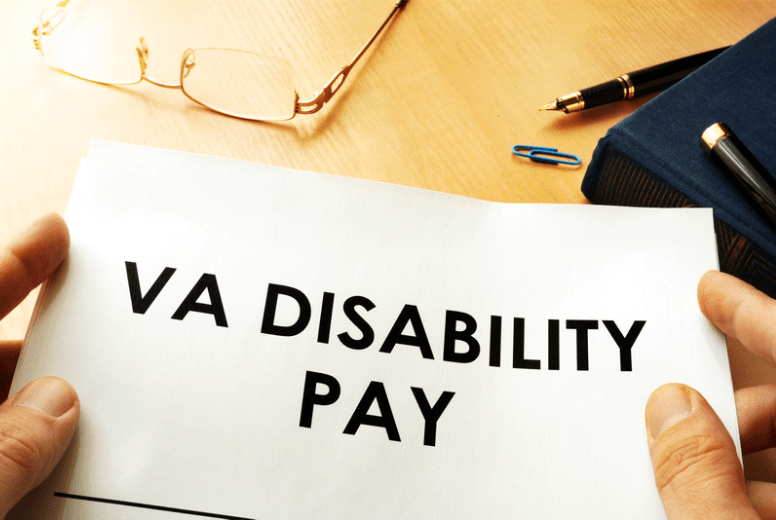The VA relies on the VA Schedule for Rating Disabilities (VASRD) to rate veterans for their service-connected conditions. VA disability ratings are intended to compensate veterans for the loss of earning capacity due to a service-connected condition, or group of conditions. There are times when the VA can rate veterans outside of what is included in the rating schedule. This is called an extraschedular VA disability rating.
What are Extraschedular Ratings?
Extraschedular ratings are assigned when the rating criteria for a veteran’s disability does not accurately reflect their level of disability. This typically happens when a veteran experiences symptoms or limitations not included in the rating schedule, this means the VA must determine if the veteran is eligible for a higher rating.
An extraschedular rating can also be considered when a veteran experiences unique or especially severe symptoms of a service-connected condition. In order to receive an extraschedular rating, the symptoms must not already be contemplated (i.e. taken into account) in the rating criteria for the disability. If manifestations of a veteran’s condition go above and beyond what is in the rating criteria, an extraschedular rating may be warranted.
How to be Eligible for Extraschedular Rating?
The criteria for extraschedular ratings come from VA regulation 38 C.F.R. 3.321(b)(1). First, the veteran must display an “exceptional or unusual disability picture with such related factors as marked interference with employment or frequent periods of hospitalization to render impractical the application of regular [schedular] standards.”
This means the condition must be unique enough that the standard disability rating schedule does not adequately or accurately reflect the degree to which the disability limits functional capacity.
Further, the condition that is being argued must be service-connected. This means that the veteran must be able to demonstrate a clear, unambiguous nexus between a specific event in service and the diagnosis of the condition in question.
Essentially, the VA must determine if the rating criteria under which a veteran is currently rated adequately covers the veteran’s symptoms. If the rating does not adequately cover the symptoms, then the VA must determine if they are exceptional or unusual symptoms which cause marked interference with employment or require frequent hospitalization. Once the VA has made this decision, the veteran’s case goes to the VA Undersecretary for Benefits or the Director of Compensation Service for a final decision.
What are Schedular Ratings?
Schedular ratings are the rating listed in the VASRD. Conditions that are in the rating schedule are assigned numeric values (ratings) that match with the severity of the condition. Ratings range from 0 to 100% and increase by increments of 10%. For each rating, the VA outlines which criteria the veteran must meet in order to receive that rating.
If a veteran’s symptoms are listed in the rating criteria for their condition, the VA will rate them based on that criteria without considering an extraschedular rating. If the veteran’s condition is not listed in the rating schedule, the VA will rate the condition analogous to another condition that has similar symptoms or treatment. These ratings are called analogous ratings.
How Much Compensation can You Receive?
Whether a disability rating is schedular or extraschedular, the monthly compensation depends on what that rating is. The higher the VA disability rating, the greater the amount of monthly compensation. The VA disability benefit schedule for 2020 is as follows:
- 0 percent disability rating. $0.00 per month
- 10 percent disability rating: $142.29 per month
- 20 percent disability rating: $281.27 per month
- 30 percent disability rating: $435.69 per month
- 40 percent disability rating: $627.61 per month
- 50 percent disability rating: $893.43 per month
- 60 percent disability rating: $1,131.68 per month
- 70 percent disability rating: $1,426.17 per month
- 80 percent disability rating: $1,657.80 per month
- 90 percent disability rating: $1,862.96 per month
- 100 percent disability rating: $3,106.04 per month
Veterans Help Group have been supporting veterans in getting the benefits they deserve since 1995 Call Veterans Help Group at 855-855-8992 or complete our free veterans benefits case evaluation form.

How to Apply for VA Disability Compensation
It's one thing to know how to apply for VA disability compensation. It's another to understand the...

What is the VA DBQ?
What is the VA DBQ? A VA Disability Benefits Questionnaire (DBQ) is a form used to convey...

Most Commonly Approved VA Disability Claims
Most Commonly Approved VA Disability Claims Veterans receive VA disability benefits for a wide...





